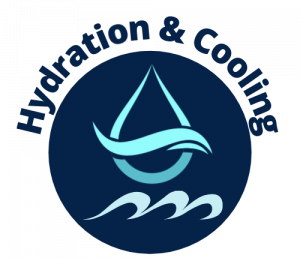Meta Description: This comprehensive guide helps coaches and athletic directors select the right hydration stations for their teams, covering key features, capacity requirements, and setup recommendations.
_______________________________
Sports Hydration Stations: Complete Buying Guide
When it comes to athletic performance and safety, few pieces of equipment are as essential as reliable hydration stations. These systems serve as the frontline defense against dehydration and heat-related illness while supporting optimal athletic performance. However, with numerous options available—from simple coolers to sophisticated mobile hydration carts—selecting the right solution for your specific athletic program can be challenging.
This guide walks you through everything athletic directors, coaches, and equipment managers need to know when investing in hydration stations. We’ll cover capacity requirements, mobility considerations, durability factors, and sanitation features to help you make an informed decision that meets your program’s specific needs and budget constraints.
Whether you’re outfitting a high school football program or a professional baseball team, the right hydration station can dramatically improve both athlete safety and practice efficiency.
Understanding Hydration Station Types
Hydration stations for athletic use generally fall into four main categories, each serving different team needs:
Mobile Hydration Carts
These comprehensive systems combine water storage, transportation, and dispensing in one mobile unit. Typically featuring tanks ranging from 10 to 55 gallons, these carts include multiple dispensing points for efficient team hydration. The primary advantages include:
- All-in-one solution requiring minimal setup
- Terrain-specific wheels for different athletic surfaces
- Large capacity serving entire teams during extended practices
- Option for integrated cup dispensers and waste receptacles
Our 10-20 gallon models are particularly popular with high school programs balancing capacity needs with storage limitations.
Sideline Hydration Systems
Designed specifically for game situations, these systems prioritize organization and efficiency during limited break periods.
- Specialized racks holding multiple coolers
- Integrated cup dispensers for quick access
- Separate containers for water and sports drinks
- Stable base designs preventing tipping during player rushes
Water Cooler Stands and Tables
These simpler systems provide stable platforms for traditional water coolers, offering:
- Cost-effective solutions for programs with limited budgets
- Versatility for different field locations and sports
- Compatibility with existing water cooler inventory
- Options for both portable and stationary designs
Individual Bottle Systems
Supplementing larger stations, these systems provide personalized hydration:
- Bottle carriers organizing individual athlete bottles
- Reduced cross-contamination concerns
- Ability to track individual athlete hydration
- Easy transport between different practice stations
Calculating Your Capacity Requirements
The most common mistake when purchasing hydration equipment is underestimating capacity needs. To determine your requirements:
Formula for Basic Hydration Needs
Use this simple calculation for minimum capacity:
- Number of athletes × 20 oz. per hour × practice duration in hours = minimum water volume
- Add 25% buffer for extreme conditions and non-athlete personnel
For example, a 40-player football team practicing for 2 hours would need:
- 40 players × 20 oz./hour × 2 hours = 1,600 oz. (12.5 gallons)
- With 25% buffer: 15.6 gallons minimum capacity
For hot weather conditions (above 85°F), increase the per-athlete volume to 30 oz. per hour or more, depending on humidity and exertion levels.
Distribution Considerations
Beyond total volume, consider how water will be distributed:
- Multiple smaller stations often work better than a single large station
- Position-group specific stations improve practice efficiency
- At least one dispensing point per 10-12 athletes prevents long lines
Key Features to Evaluate
When comparing hydration station options, assess these critical features:
Mobility and Terrain Compatibility
Different wheel designs serve specific surfaces:
- Pneumatic (air-filled) tires for uneven natural grass
- Non-marking rubber wheels for indoor facilities
- Wide-profile wheels for artificial turf to prevent damage
- Locking mechanisms for stationary use on slopes
Durability Factors
Evaluate construction materials for longevity:
- UV-resistant plastics for outdoor use
- Food-grade tanks with non-leaching certification
- Powder-coated metal frames resistant to corrosion
- Commercial-grade faucets with replaceable parts
Sanitation Features
Essential design elements for hygiene:
- Fully drainable tanks with large drain openings
- Disassemblable components for thorough cleaning
- Smooth interior surfaces preventing biofilm accumulation
- NSF-certified materials for food/beverage contact
Find Your Perfect Hydration Solution
At Hydration & Cooling Sports Equipment, we specialize in customized hydration systems for athletic programs of all sizes. Our equipment is built specifically for the demands of sports environments, with durability and athlete safety as top priorities. We understand the unique challenges athletes face and strive to provide solutions that enhance performance and well-being. In our commitment to education, we also offer resources where sports hydration systems explained can guide coaches and trainers in selecting the right systems for their teams. With our expertise, we ensure that every athlete can stay properly hydrated, no matter the intensity of their activity. We understand that every athletic program has unique needs, which is why we offer a wide range of options tailored to various sports and level of competition. Our sports hydration equipment essentials ensure that athletes stay properly hydrated, enabling them to perform at their best while minimizing the risk of dehydration injuries. Trust us to provide solutions that meet the rigorous standards of even the most demanding sports environments.
Contact our team for a personalized consultation to identify the perfect hydration station configuration for your specific needs and budget.
